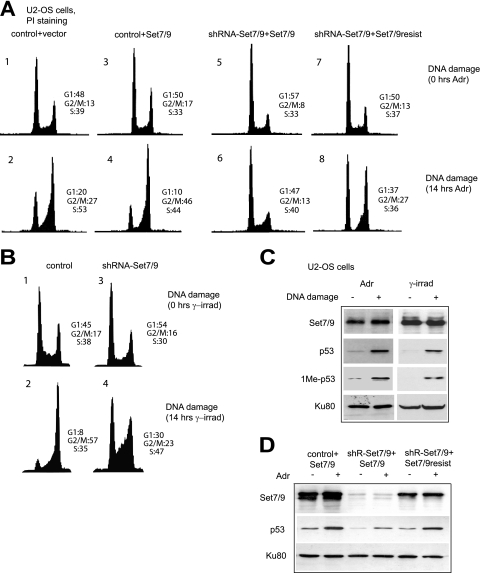FIG. 2.
Set7/9 controls p53-dependent cell cycle arrest in the G2 phase in response to DNA damage. (A) Fluorescence-activated cell sorting (FACS) analysis of control- and shRNA-Set7/9-infected U2-OS cells transfected with either empty or Set7/9-expressing vectors after DNA damage treatment with 2 μM Adr. Panels 1, 3, 5, and 7 and panels 2, 4, 6, and 8 represent untreated and Adr-treated cells, respectively. Mock-treated or Adr-treated cells were harvested, fixed, and stained with propidium iodide (PI) before sorting. The percentage of cells in G1, G2/M, and S phases are indicated in the right corner of each panel. (B) FACS analysis of control- and shRNA-Set7/9-infected cells treated or mock-treated with 10 Gy of gamma irradiation. Panels 1 and 3 and panels 2 and 4 represent untreated and treated cells, respectively. (C) Western blot analysis of U2-OS cells treated with Adr and gamma irradiation (γ-irrad). The status of Set7/9 (upper), p53 (lower), 1Me-K372-p53 (middle), and Ku80 (bottom) was analyzed by Western blotting with the corresponding antibodies. (D) Western blots of the corresponding cell lines analyzed in panel A. The amounts of Set7/9, p53, and Ku80, used as a loading control, are shown in cell lines treated with Adr as in panel A. Note that ectopic Set7/9 migrates more slowly than the endogenous protein because of the Flag- and His6 tag epitopes.

